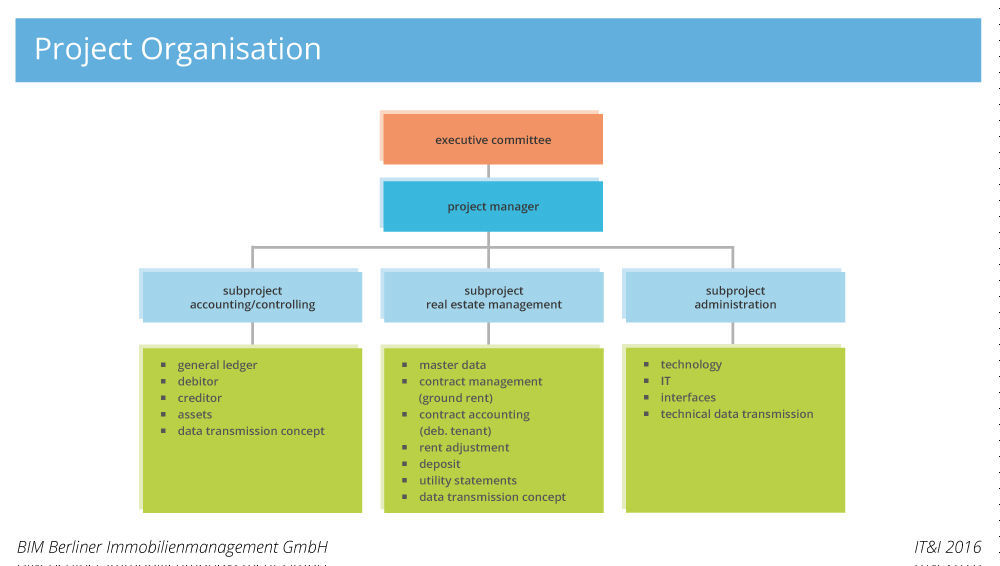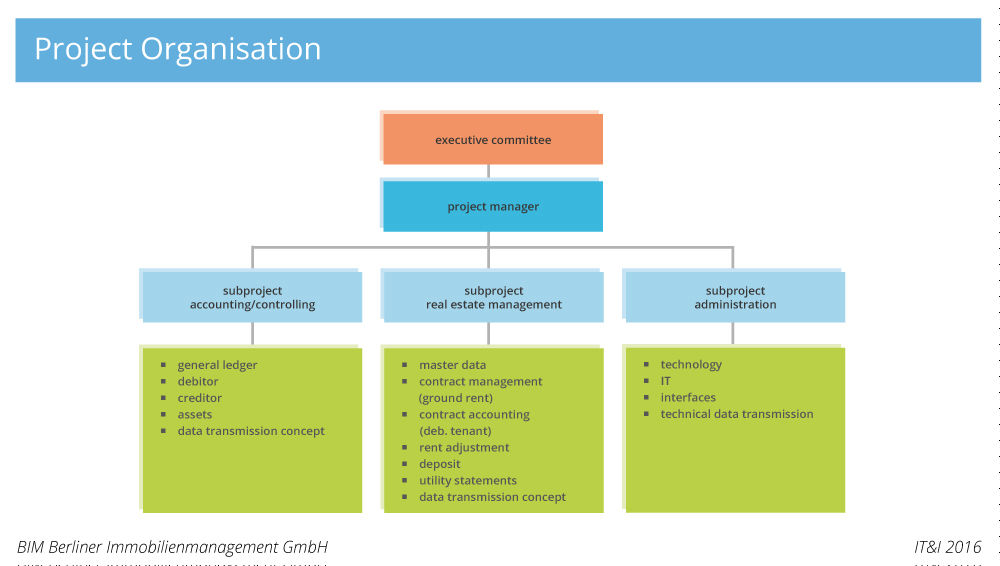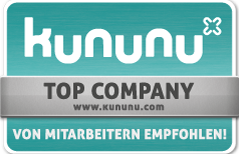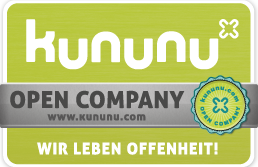Migration at record speed – the fusion of federal state real-estate companies in Berlin

Until now, Liegenschaftsfonds was responsible for selling real-estate and land belonging to the federal state of Berlin, which was not required for operations. However, instead of selling these properties, the federal state of Berlin has now decided to increasingly keep them in its portfolio, as it plans to use the real estate to pursue an active urban development policy. Thus, at the beginning of 2015, based on a decision of the senate, Liegenschaftsfonds merged with the BIM GmbH, which is also a federal state company. BIM leases and sells federal state-owned real estate and also secures plots of land for the growing city to use for its own purposes.
The fusion of the two Berlin-based companies has long been a feature of the political process, and the merging of the two companies goes back to a decision of the Abgeordnetenhaus (Berlin House of Representatives) in October 2013. Although the fusion was then not formally complete, the decision was made to standardise the system at the turn of the year 2014/2015. The project was kicked off at short notice in August 2014. The project group’s objective was to integrate data from the LFB’s non-SAP® system into the existing SAP® ERP system at BIM. BIM has been working with SAP® ERP 6.0 on the basis of the PROMOS.GT industry solution since 2006, and thus has a template that has been tried and tested in practice as well as nine years of experience with SAP®. Core functions (e.g. data transfer of master data, debit positions, posting vendor invoices and importing electronic bank statements) had to be functional by the beginning of 2015 to ensure that there were no parallel system environments on the merger date. The companies decided not to create a set of specifications and instead focused on functional issues – Where do existing processes need to be adjusted? Which additional functions of the SAP® system or the PROMOS.GT template are required and may need to be customised? How can we transfer the data? How can we ensure guaranteed high data quality?
Stumbling blocks during the project phase
Major hurdles for the
project included a strict schedule as well as different system dependencies,
different business processes and deviating organisational structures within the
two companies. To take the business process as an example: between transferring
the real-estate to the trust assets and selling it, Liegenschaftsfonds
concentrated on the key areas of asset management. BIM, in contrast, performs
and controls the entire service for its tenants – usually the federal
state of Berlin – working closely with service providers in the process. The
situation with the organisational structure was similar. The employees at LFB
were specialised in very specific areas. For example, contract management was
divided into leasehold law and property law as well as lease-outs. BIM’s task
areas, by contrast, were more general. The different organisational structures
initially made compiling the working groups difficult, resulting in more than
ten participants attending some sessions. A further obstacle was that LFB’s
previous IT service provider did not participate in extracting the data from
the old system, which meant that LFB’s IT department and BIM’s system
management took complete responsibility for this task.
Successful data aggregation
During the data migration, the data from Liegenschaftsfonds first had to be structured in a way that made importing it into the BIM system possible. The LFB database contained a total of around 14,600 properties, of which some were duplicates and units that had already been sold but had remained in the system. The data thus needed to be reduced before the migration to the new system, in particular because the buildings and plots of land had not been entered individually but as higher-level properties. The project team managed to aggregate the data to a significant degree and summarise the properties into around 4,000 business units. The project team was then able to begin transferring the first test data at the beginning of November.
The existing BIM system also needed to be configured for the
new procedure, as LFB had concluded lease-outs with third-party tenants, for
example, which resulted in extremely customised lease-out structures.
Accordingly, this needed to be implemented in the BIM landscape in a different
way to other lease-outs.
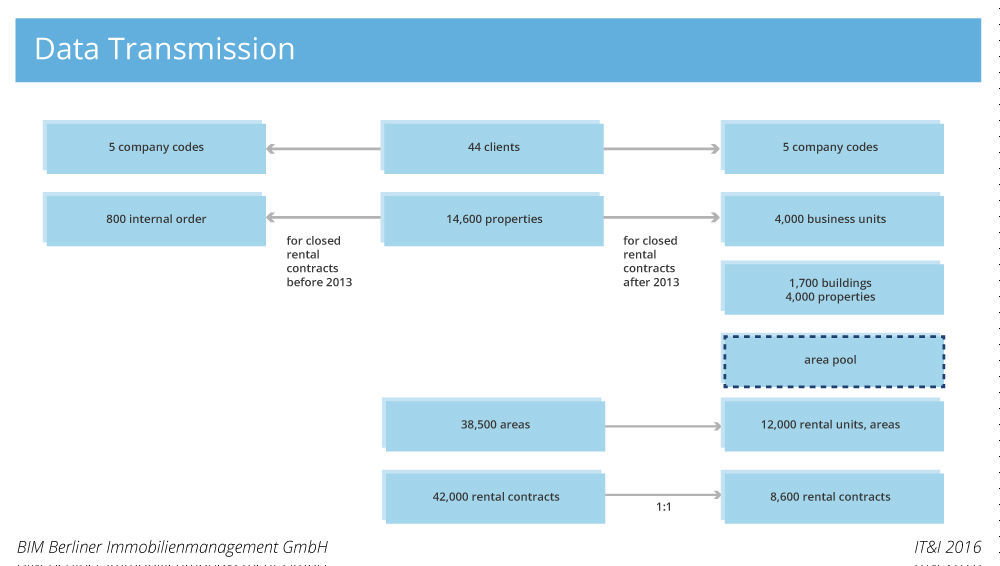
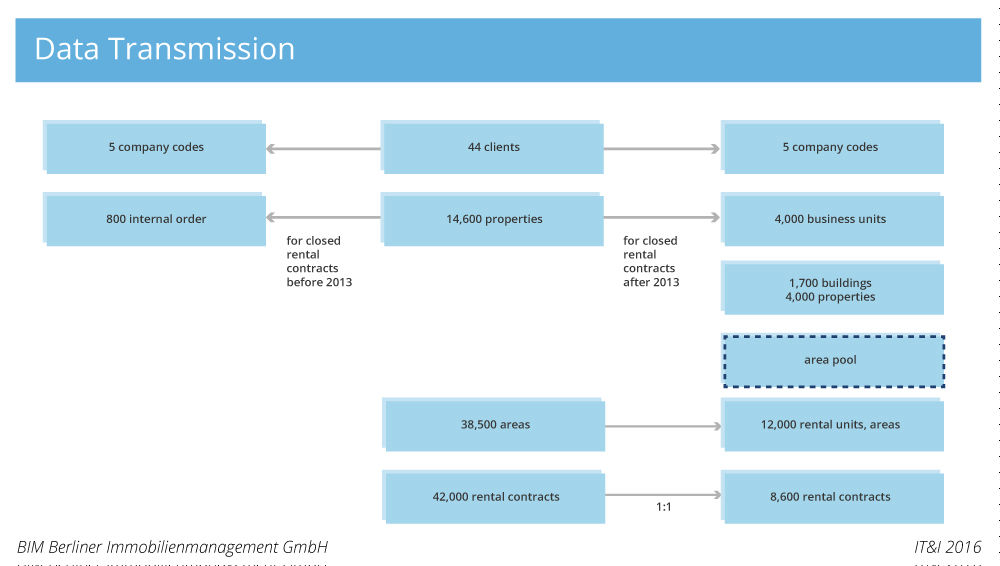 Figure 2: Transferring the data to the new
SAP® system. |
Comprehensive support from PROMOS
A key aspect for the project’s success was that PROMOS guided and supported both companies through every pending task as well as with transferring knowledge. For example, the LFB employees participating in the project were integrated into the debit position comparison in the SAP® system at an early stage before the upcoming start of the year 2016, so the project participants (of whom there were approx. 20) were already very well trained in using the SAP® system before the live launch and were therefore highly motivated to begin using it in their day-to-day work.
Overall, the project ran largely according to plan despite the ambitious schedule and associated high workload. As soon as the migration project was complete, Phase II began in which further functions were added and optimised. This had not been possible during Phase I due to the tight schedule. In addition, the team started a follow-up project to reduce the 4,000 business units (approx. figure) down to 550 units by the beginning of 2016, which would allow them to better implement the management strategies.
Summary
During the course of merging LFB with BIM, the decision to use a shared ERP system made perfect sense. The added value of the new system can now be seen in everyday working life. All the key information relating to the real estate inventory is kept in a shared system and can be evaluated across company codes with a reasonable amount of effort and no media discontinuities. The standardised business processes also allow efficient processing of the individual workflows. Launching the project before the merger was also important, as fundamental lessons were learned at an early stage and relevant measures had already been implemented by the time the actual merger took place. A helpful factor here was BIM’s nine years of experience with SAP® and the resulting established procedures in the company.
However, any gains in efficiency are of no use if employees
are not convinced. In the project, PROMOS not only provided support with
process controlling and the merging of two systems, but also participated in
merging two different corporate cultures. This process demanded excellent
social skills from the entire project team. However, the initial scepticism at
the start of the project quickly evolved into goal-oriented and successful
interpersonal collaboration between all the project participants.
Author:

Imke Knop
Expert Consultant Financials
PROMOS consult
Other articles by this author:
- Article "Migration at record speed – the fusion of federal state real-estate companies in Berlin"
- Article "A network of project developers – what makes working with PROMOS.GT so extraordinary for moderne stadt"
- Article "The new billing data processing procedure from Aareal Bank boosts efficiency for real estate companies – TAG and GEBAG report on their successes"
